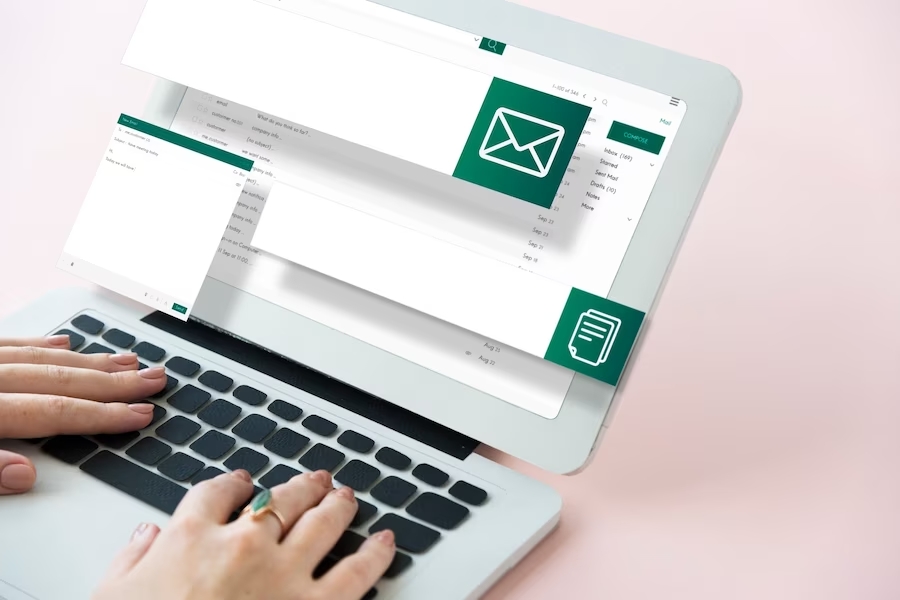AI to send hyper-personalized emails
More and more companies are relying on email marketing to build their brands and establish personal relationships with their customers. To add to that, 78% of the email marketers are personalizing their emails to capture their subscriber’s attention. Due to this, competition in the inbox has become stiff. Marketers are slowly shifting towards hyper-personalization and the use of AI to get back their winning edge.
Here is a brief guide to help you understand how you can use AI, along with responsive Mailchimp templates, to send hyper-personalized emails.
What is email hyper-personalization?

Email hyper-personalization uses the micro-segmentation technique to send the most relevant content, product recommendation, and ads to the reader. The marketer can improve the customer experience while increasing the chances of converting them. Hyper-personalization with emails saves a lot of time and resources for the brand.
For one, the company need not spend time creating generic content that may or may not work for their customer demographics. But, with hyper-personalization, they can design the content according to the needs and preferences of the customer. There is no denying that laying the foundation for hyper-personalization and micro-segmentation is challenging. Having said that, the process can be made significantly easier with artificial intelligence and smart machine-learning algorithms.
How can AI catapult your personalization efforts to a new level?
Create effective micro-segments
Proper segmentation of the customer’s data is one of the supporting pillars of email hyper-personalization. Marketers can do it manually by setting up parameters to funnel the subscribers into different segments. However, this method is time-consuming and not cost-effective. On the other hand, technically proficient email marketers can automate the system by using certain predefined codes to do the segmentation. But, this system has its flaws and can needlessly complicate the sorting process.
Both the methods mentioned above pale in comparison to the segmentation capabilities of AI. Artificial intelligence can create segments based on browsing habits, shopping preferences, cart order values, and the purchase history of the customers. Moreover, AI can create micro-segments based on the live interactions of the customer with the products on your website. As a result, it eliminates the guesswork and targets customers with highly specific product recommendation emails.
Better email-sending times
Email automation sure makes it easier for the marketer to send campaign emails at the best time to garner higher open rates. And, adding predictive AI to the mix can instantly improve your automated system. After incorporating AI in the marketing strategy, marketers have noticed massive upticks in their conversion, click-through, and open rates.
Automated emails are sent during the day when the probability of the subscribers opening the mail is high. But, the system cannot accurately predict the proper timing for individual subscribers. This is where AI changes the game. Predictive AI allows marketers to identify when an individual subscriber is most likely to open their email. It then sends the email during that particular time frame. This unique ability of AI to instantly analyze and make the necessary decision cannot be replicated by other automated email campaigns.
Generate hyper-personalized subject lines
Having a catchy subject line that makes the subscriber click on your emails is a crucial element of any email campaign. The email service provider can even flag the emails as spam if the subject line looks misleading or contains spam words. It is quite challenging for copywriters to keep themselves updated with all the new spam words that are constantly added to the list.
This is why most marketers have already started using AI subject line generators to create spam-free subject lines. A good AI tool can scan thousands of data sets and come up with the best subject lines for any particular group of people. You can use responsive Mailchimp templates to make it simpler for the AI to swap subject lines for the different subscribers.
Furthermore, advanced AI, along with micro-segmentation tactics, can come up with highly personalized subject lines for individual subscribers. AI goes through a lot of data like subscribers’ past purchases, interaction with specific links, their location, and any other data that is available with the organization.
A better understanding of campaign results

Since AI-driven hyper-personalized email campaigns focus on individuals, it can be difficult for marketers to measure the overall campaign performance. Hence, you also require AI to help analyze the data. And, because of its machine learning capabilities, it can instantly update its working system depending on the results and feedback from the campaign. Thus, it reduces human intervention and maximizes the ROI of the organization.
The campaign metrics are also slowly changing after Apple announced its Mail Privacy Protection protocol. The new protocol shows inflated open rates because the emails are first downloaded on Apple’s server. As a result, marketers have to now depend on deliverability rate and conversion rates. AI also helps in this by masking duplicate entries and increasing data accuracy.
Conclusion
There is no doubt that AI enhances regular email campaigns by introducing hyper-personalization. The only downside of introducing AI is the cost. It can cost a fortune to build a capable AI. Therefore, before you commit to this, you need to be clear about what your problems are and how they can be solved with AI. Of course, you always have the option of relying on pre-built AIs and machine learning algorithms of other email marketing companies.
Author:
Kevin George is the head of marketing at Email Uplers, which specializes in crafting Professional Email Templates, PSD to Email conversion, and Mailchimp Templates. Kevin loves gadgets, bikes & jazz, and he breathes email marketing. He enjoys sharing his insights and thoughts on email marketing best practices on his email marketing blog.

















